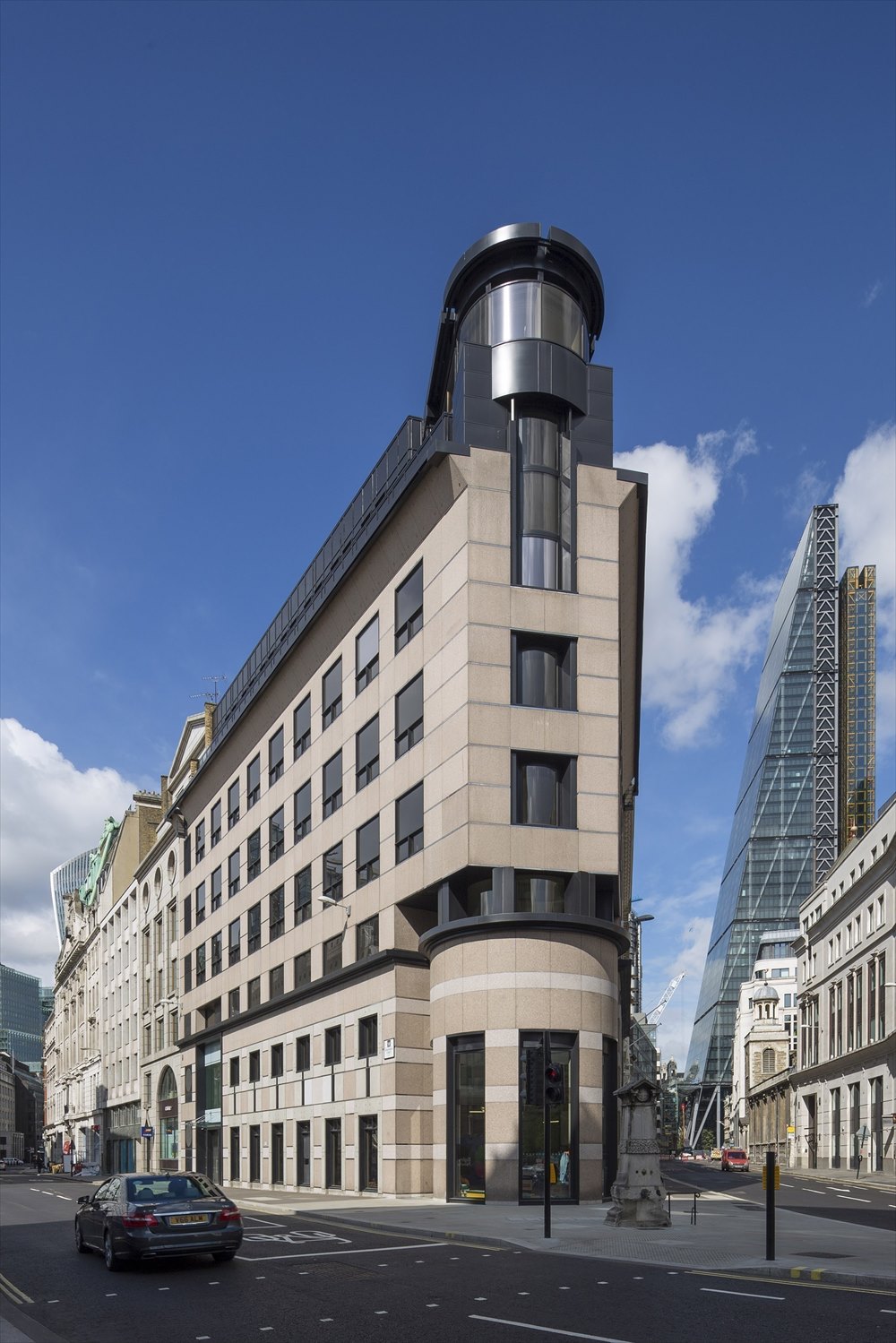
69 Leadenhall – FULLY LET!
We are delighted to announce that following the 1st Floor (3,151 sq ft) letting at 69 Leadenhall Street to Ramon International Insurance Brokers, the building is now fully let. Ramon join the likes of RSG Recruitment, SBFI and The Association of Corporate Treasurers and will enjoy the benefits of newly refurbished office space and first class facilities.
Situated on the prominent junction of Leadenhall Street and Fenchurch Street, the building is a short walk from both Lloyd’s of London and the Bank of England. It is also adjacent to the Aldgate Pump, a historic grade 2 listed structure famed for the metal wolf head which supposedly signifies the last wolf shot in the City of London!
City of London office leasing success kick starts capital markets
According to a recent article in City AM, City of London leasing in 2019 hit 6.4m sq ft, a three per cent improvement over the previous year.
This was further backed up by real estate research confirming that overall office rental leasing in London exceeded 14.9m sq ft for the year.
Despite the economic uncertainty and general fragility caused by Brexit and the political environment, there was increased take up by tech, media and educational sectors. The financial-sector office space demand also remained strong, with a share of 24% compared to an 18% share in 2018.
In the fourth quarter, 3.9m sq ft of office space was let across London, a fall over the previous quarter but representing the third-highest quarterly average in the last five years
The jump in office leasing in London “highlights a level of confidence that business continues to have by securing an office footprint in the capital”.
This seems to have had a knock on effect on the city of London investment market which has witnessed a flurry of potential sales. This is undoubtedly down to the election result and the associated perceived stability it will bring. However, the solid fundamentals of the leasing market have also encouraged investors.
How real estate has reshaped the City – Annie Hampson
Thirty years ago the City of London was quite a different place. One could still see bowler hats, walking sticks and women wearing luxurious shoulder pads! Senior managers were accompanied by a chauffeur or commuted by vehicle and would look disapprovingly at the "eccentrics" taking the same journey by bicycle.
Coffee shops did not exist. The choice was limited to greasy spoon cafes, traditional business canteens, private dining rooms or boozy bars at lunchtime, and if you had to buy a meal on the way home, forget it – there was no shop in sight.
Confidence in the City started dwindling further in 1989. Canary Wharf has been treated as a threat rather than part of a larger real estate deal in London. The 1993 Bishopsgate attack by the IRA rocked opinion down further, despite Britain only recovering from a harsh recession. But as economic activity increased in the 1990s, so did confidence, and two landmarks offered significant indicators for transition.
A more vibrant Square Mile – The Millennium Bridge opened in 2000, connecting St Paul's and the Tate Modern, and after a wobbly launch, the cycle of promoting the City as a cultural hub started.
The Gherkin was next at 30 St Mary Axe. Planning permission was a major doubt but there was great joy when it was eventually announced after a fraught process. Its launch in 2004 signified that the landscape of the City was forever changing.
The Eastern Area has now become associated with world-class architecture such as the Leadenhall Tower or the "Cheesegrater" and 22 Bishopsgate, as well as offering offices for thousands of people working in cutting-edge new buildings.
Now the City couldn't be more special, with diversity increasing the agenda for a wide range and size of companies, thousands of regular and world-class restaurants and shops moving into the Square Mile.
So how do we in the City of London preserve the progress? How do we guarantee it remains to be seen as free and transparent when Britain exits the European Union? And how are we going to tackle the other major issue of our day-climate change?
We agree that the 2036 City Plan tackles those concerns. It develops policy on offices, homes, tall buildings, open space, greening and environment adaptation programmes, art stores, and community services.
The plan is to expand the City's office space by at least 21m sq ft over the period to sustain its position as a world-leading financial and professional services market, meaning that the office supply is accessible for a wide range of tenants including small and rising companies.







